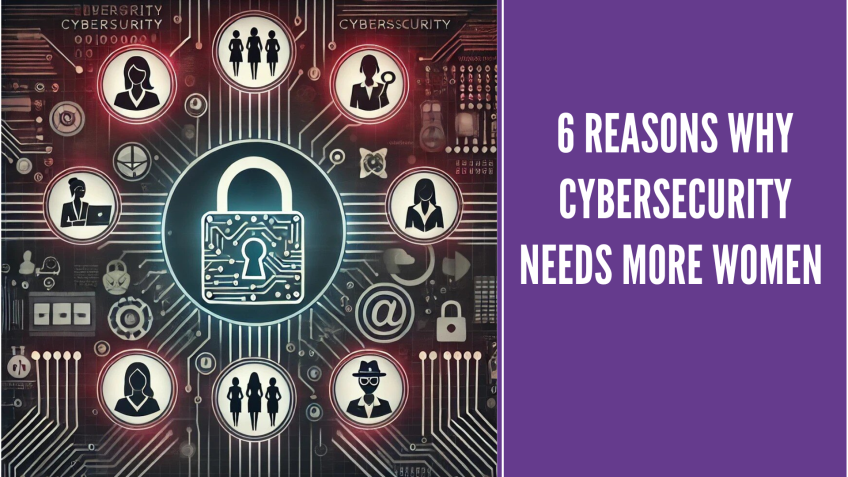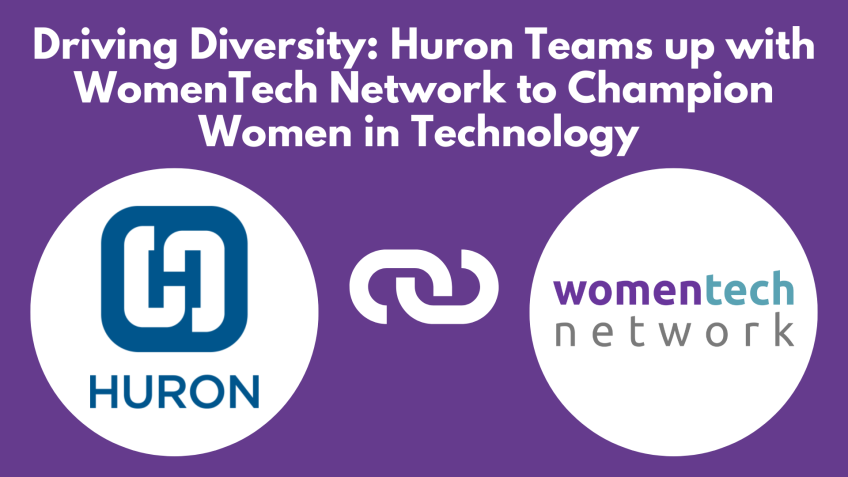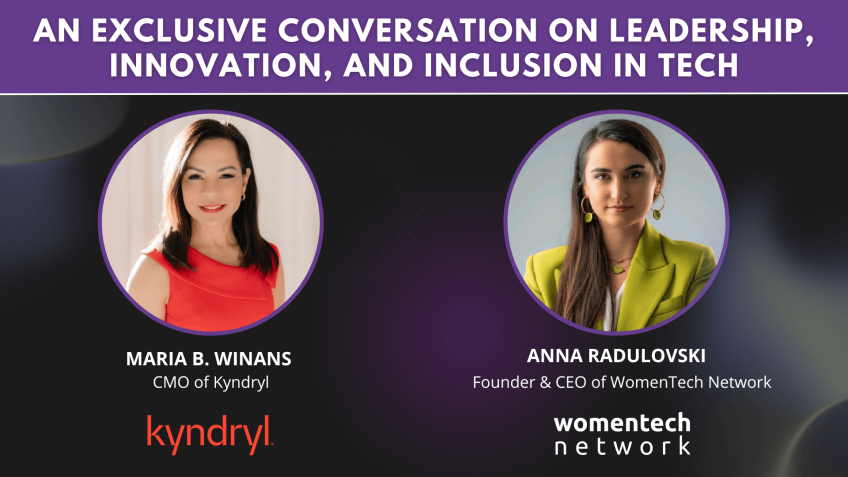How Technology Leaders Can Build Inclusive, High-Performing Teams
Jossie Haines
Executive CoachBuilding Inclusive, High-Performance Tech Teams
Welcome to our blog post that delves into an insightful talk on fostering inclusivity in tech teams. The tech industry is becoming increasingly aware of the critical role diversity and inclusion play in fostering innovation and enhancing performance. Our key speaker on this topic was Josie Haines, the former Engineering Manager at Apple responsible for music, media, and sports. In this role, Josie’s direct experience with gender bias in the tech industry fuelled her aim to create inclusive and high-performing teams. Let’s find out more about her journey and her advice on achieving this goal.
The Reality of Microaggressions in Tech
As an insider in the industry, Josie reveals how a myriad of subtly negative and biased interactions, termed microaggressions, can unwittingly shape women's experiences in the tech industry. Evidence of this striking issue in gender bias is the startling fact that 56% of women leave the industry after 10-20 years, leading to what McKinsey has termed "the great breakup".
Such gender bias isn't exclusive to women, but it also applies to people of color, members of the LGBTQ+ community, and people from different backgrounds. Stats suggest that diverse teams in leadership, for example, perform 30% better and are more resilient in a recession. As inclusive leaders, we need to take into account all perspectives and reduce bias to build products that serve real-world needs better.
The Quest for Inclusivity with Empathetic Management
Empathetic Management 101
Josie’s idea of driving diversity and high-performance stems from her own Empathetic Management Framework. The three stages include:
- Player 1 Ready: Here, leadership efficacy begins with empathy – a learned behavior that enables leaders to understand other’s feelings and perspectives.
- Multiplayer Mode Activated: This phase emphasizes the cultivation of equity, fairness, and inclusivity by focusing on our core values
- Theory Craft in Full Effect: The final phase ties inclusion to business goals, providing the most significant potential impact on society.
Real-world Application: A Case Study of GitLab
The DevOps platform GitLab serves as a perfect example of integrating these stages by aligning their core values with inclusion, collaboration, transparency, and high performance. Key examples of GitLab's initiatives include full documentation of business processes and comprehensive metrics of diversity plans.
Promoting Inclusion Equals High Performance
Allyship, empathy, and continual education play critical roles in creating an environment that values each individual’s input. Traits of a high-performing team — alignment, accountability, collaboration, effective communication, diversity, and growth mindset — can enhance a team's performance due to embedded inclusivity. By nurturing such elements, technology can be tailored to solve real-world problems efficiently and equitably.
The Way Forward: Taking Inclusive Actions
You can start to foster an inclusive culture by forming learning groups, sharing ideas, and holding each other accountable. Encourage transparency within the team and leverage coaching as a tool for finding blind spots and improving skills.
The commitment you take today towards creating an inclusive workspace aids in building technology that addresses tomorrow's challenges effectively. Stand up against inequities and promote diversity to reap propitious rewards. Together, through our small actions, we can change the world.
Stay in touch with our latest posts by following us on LinkedIn.
Video Transcription
Should I start the presentation? Yes, please. All right. Awesome. Hey, everybody. It's great to be here.I'm gonna be doing my talk on how to build inclusive and high performing teams in tech. I couldn't believe it. Despite being the Siri Domains Engineering Manager in charge of music, media, and sports for Siri, I was watching the Apple TV team member we were meeting with direct all the technical questions to my male colleague. And I heaved an internal sigh and thought to myself, how many times has this scene played out? And despite the countless occurrences, I had quickly dismissed the scene as my busy day continued. I had resigned myself into believing that this is just what happens in the tech industry. Later that afternoon, though, I received an unexpected email from that team member.
Josie, I wanna take a moment to apologize for my assumption earlier today during the meeting. That was terrible gender bias on my part. I want to say I'm sorry and I want I'm going to make sure to not let that happen again. Wow. I was stunned and then I felt a little lighter and saw a ray of hope. This apology showed me that change is possible and that small actions can make a big impact. But for most women in tech, these microaggressions, you know, those small actions that can negatively impact marginalized groups, they go unacknowledged and add up, each turning into yet another drop in their inequity buckets. And what are some of these microaggressions you might ask? Well, here's some I faced being called feisty for disagreeing with a coworker during a meeting, that's a drop.
Not being invited out to drinks because the guys are gonna talk about sports, that's a sexist drop. And being asked to take the notes because I was the only woman in the room, That's another drop. And these drops, they add up and eventually their inequity buckets overflow, which is why 56% of women are leaving the tech industry after 10 to 20 years of giving it their best shot. And we're supposedly so sought after, so why are we leaving? Well, we're in the middle of a cultural paradigm shift, and women are done with not being treated equitably. The latest McKinsey workplace report is calling it the great breakup And more women leaders are switching jobs than ever before, more than men. And then at the same time, we are in the middle of a trust crisis as women leaders.
The Reykjavik Index for Leadership is an annual survey that compares how men and women are viewed in positions of leadership. And that has shown the trust in women leaders has fallen in the last year. This year, only 47% of respondents said they'd be very comfortable with a woman as a CEO of a major corporation, compared with 54% a year earlier. And then the Women Tech Network did an analysis in December of the layoffs that had happened in tech up to that point. And notice that 69.2% of those who were laid off were women, but we only make up about 25% of the tech industry. And if we could be building more inclusive teams and truly welcoming more women, people of color and other backgrounds, we would be building better products for more people to enjoy and use.
Inclusive teams perform 30% better when they have high diversity and inclusive leadership. Inclusive and diverse teams are more likely to thrive in a recession, which is pretty important in today's economic climate. And inequity is actually costing the tech industry $16,000,000,000 a year due to the number of people leaving from unfairness and what the replacement costs are. And it's not just about unfair treatment. Technology has roots and biased behaviors, and it shows up in our products. You know, one example is Amazon used used an AI was trying to build an AI recruiting engine to help them sift through their resumes to decide to who to call in for interviews. Well, it turned out to be biased against women. And how did that happen? Well, there was an overwhelming amount of male resumes in the initial data set.
And so the machine learned to just be biased against women. And as we've got more of these AI products being developed, this is such an important thing to take into account. And so there I was, it was early 2018. I left my role as an engineering manager at Apple, and I was burnt out. I was feeling alone. I was going through imposter syndrome about my management abilities. And I was about to join that 56% of women who walk away from this treatment and become a double statistic along with the 22% who say screw corporate, I'm gonna do my own thing. But at this point, I met CJ, the, at the time, new CEO of Tile. And while he was another male CEO in tech, he was an exceptional leader and he spoke music to my ears.
I had said to CJ, I love what you're doing here at Tile, but I don't wanna work for just any tech company. If technology is going to impact our daily lives as much as it currently does, I want to work somewhere where inclusion is not just lip service and I can not only lead an amazing or engineering organization, I can also empower an inclusive culture. And CJ surprised me and said I promised my wife and daughters I was going to make tile the best place for women to work in the valley. And I loved that and so he hired me and we delivered on what I promised. We created that inclusive culture through a focus on inclusive leadership, embedding our core values into all aspects of the business and an unwavering commitment to DEI across all levels of the organization. And this empowered us to scale our engineering org from 29 to 55 in 4.5 months in the middle of COVID while ensuring we were creating an equitable experience for all of our employees, no matter their backgrounds.
And I had a realization though. I wanted to be pouring water out of this inequity bucket, not just scooping out a few drops at a time. So I left tile and I turned my mission to retain women in tech into my new business. I believe fulfilling this mission is twofold. 1st, by coaching women leaders in tech and enabling them to thrive. And second, by empowering technology companies and leaders to build inclusive and high performing teams. Because we have to address the fact that engineering teams are often the least diverse teams in an organization, and we can change that through inclusive leadership. And that's where my mission comes to play. I want to keep women and other underrepresented minorities thriving in tech. Because if you want a high performing team, we must ultimately welcome diversity.
Seeing a problem from a variety of perspectives is going to enable us to build technology that solves our true real world problems. And to help leaders build inclusive and high performing teams, I've developed the empathetic management framework. And given my passion for gaming, when started on my Commodore 64 at 5 years old, I gave the 3 phases a little bit of a gaming flair. And hey, I worked in the gaming industry too. So, and phase 1 is player 1 ready. And it starts with you becoming a more inclusive leader through a foundation of empathy. There's good news here. Empathy is a learned behavior and it's also an essential business skill. Next is phase 2, multiplayer mode activated. And this is the inclusive culture building step.
And you apply the management principles you learned in phase 1, to build a culture that is equitable, fair and inclusive, so that everyone wants to work for you. And that starts by defining core values focused on inclusion, diversity and high performance. And then you need to update your company processes to incorporate those values. And then finally, there's phase 3, theory craft and full effect. And this is where the magic happens. But so often, companies fall short of this phase despite the 1,000,000,000 spent with nothing to show for it. However, when we tie our inclusion initiatives to our business goals and we hold our leaders accountable to the inclusive behaviors from phase 1, we all win. One example of this is next time you have a high performer on your team who delivers amazing work, but then turns around and yells at their teammates, hold them accountable to how their behavior impacts the overall performance of their team.
So let's dive into these three phases and make them actionable with some examples. So let us start with that phase 1. And as I mentioned, empathy is the foundation for inclusive leadership. And one of my favorite definitions 4 aspects to building empathy. 1 is perspective taking, which means putting yourself in somebody else's shoes. 2, staying out of judgment and listening. 3, recognizing emotion in another person that you may have felt before. And 4, communicating that you can recognize that emotion. And so as an inclusive leader, you can apply these four aspects by 1, being willing to be vulnerable and admit that hey you make mistakes and maybe you also don't have all the answers and that's okay. 2, being introspective and understanding your own biases and privileges and where those might show up. 3, being humble and curious and leading with questions out of curiosity, not judgment.
4, having a focus on collaboration and ensuring that you're really getting the perspectives of each and every one of your team members. Next is managing through those effective and fair processes and principles that reduce bias. And finally, having the courage to be an ally and be willing to speak up when you see something unfair happening and having this commitment to allyship and DEI and continuously educating yourself on different cultures. And as I said, I mentioned empathy. Right? And so, one of the areas you can use empathy is applying empathy to code reviews or, you know, maybe you're doing product reviews. Like these are things that you're doing potentially on a daily or regular basis. And it's a great way to teach your teams to be more empathetic.
To look at an example of what phases 2 and 3 look like in action, I wanna dive into a case study of GitLab. And for those of you who might not know, GitLab is a DevOps platform that's focused on helping teams ship code faster. They're a great example of creating an inclusive culture and operationalizing it into their goals. So let's start with their mission. Our mission is to make it so that everyone can contribute. When everyone can contribute, users become contributors and we greatly increase the rate of innovation. Their mission states that they understand that diversity isn't just a nice to have, it's a there is value to everybody contributing. Next, let's look at GitLab's core values. They have 3 values that are tied to inclusion, collaboration, diversity, inclusion, and belonging, and transparency. And they have 3 core values related to high performance, results, efficiency, and iteration.
They realize that inclusion and high performance go hand in hand. And when your values are part of your day to day activities and your processes and leaders model and are held accountable to these behaviors, you have created that inclusive culture. Right? And so here's a here's a little formula for you on on how to think about inclusion. And this in in the GitLab example, they show this by having their company documentation fully document their values, processes, and ways of working, and those are publicly available on their website. They also have transparent diversity metrics, targets, and plans that and they're willing to share like, hey, this is what worked. And this is what didn't, right. And that's that vulnerability and that willingness to commit to these things and operationalize these core values into all aspects of the business. Like, that is where the magic happens.
Aspects of the business. Like, that is where the magic happens. And another, like, concrete example of this is within engineering is their new development director shadow program. Similar to the CEO shadow program, this allows underrepresented minorities from the community to shadow an engineering leader within GitLab and learn about what the role is like. And so it's an amazing opportunity that shows a great example of what a company can be doing to support DEI not just within their team but in the community as well. And ultimately, they've realized that DEI is a journey and not a destination. And GitLab is a great example of what I would love to see more companies doing, holding themselves accountable and having a strategic plan for making inclusion a reality. And I've spoken a lot about inclusion. So how does this relate to having a high performing team? Well, let's go over the traits of a high performing team.
They are alignment, accountability, collaboration, effective communication, diversity, and having a growth mindset. And what you might notice is this list is similar to the traits that inclusive leaders are focused on. So inclusion and high performance are intertwined. And focusing on inclusion and diversity can empower high performance. And by going through the three phases of the Empathy in Tech framework, you can create a team that is inclusive, high performing, and delivers better products that fulfill more people's needs. And remember, don't stop short of phase 3 because it's truly when you operationalize and systematize the initiatives and directly tie them to your business goals when you move the needle. And our world is getting more diverse, and both employees and customers are expecting more, especially Gen Z, and they are holding businesses accountable to that higher standard.
And so focusing on these areas enables success in building technology for future generations. And I hope that you walk away today realizing how much power you have potentially as a leader in this space to impact inclusion and diversity on your teams. Because together we can change the world and it starts with a decision and commitment today to becoming a more inclusive leader. And I realize the journey can be challenging, but it's not one that you have to face alone. So what is one action that you can take starting tomorrow to help you become a more inclusive leader together? Well, you can create an inclusion learning and accountability group with your friends and peers and use these as a way to learn, share ideas, and commit to actions and growing in your inclusion journey.
We do not have to be reinventing the wheel here. Tell your team members about this talk and share with them that you're committed to being a more inclusive leader and let them hold you accountable. And that shows that you're trying to be more inclusive within doing that. Or, you know, leverage a coach to create an action plan, help you see your blind spots, and provide you the confidence that you're developing the right leadership skills. And if that's interesting to you, feel free to DM me on LinkedIn. I help leaders develop their action plans. But, ultimately, if you pick one of the actions I've suggested or do something else, what matters the most is committing to doing something daily towards creating a more inclusive workspace.
And I'm hopeful that together, we can impact the future and create a world where technology does solve our real world problems and ensures those solutions are equitable for all. So will you join me in committing to taking a small action on a daily basis to fight the inequities in tech, speak up when needed, and promote inclusion and diversity on your team. Imagine just how much can be accomplished if we followed through on those actions. Thank you all for taking the time to be here. It's been my pleasure to see you today. And I'm Josie Haines again. If you're interested in connecting or learning more, please send me a DM on LinkedIn. The QR code takes you to my LinkedIn page. And, again, thank you.






